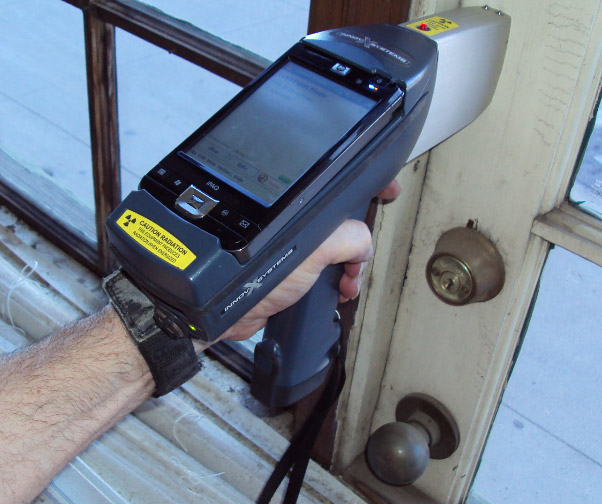Comprehensive Guide on Effective Lead Offense Removal Strategies
In the realm of environmental security, attending to lead offenses demands a precise and structured strategy. This detailed overview begins by highlighting the critical initial actions of determining lead threats with advanced assessment and testing techniques. Techniques such as XRF analysis and dust clean tasting are vital in determining contamination sources. Furthermore, the guide elaborates on the importance of adhering to rigorous safety and security procedures during the removal process, including using proper PPE and separating impacted locations (Lead Paint Removal Company). The subsequent sections promise to talk about post-removal verification and precautionary techniques, ensuring long-lasting security and conformity. Discover the elaborate details that make these methods not simply effective yet crucial.
Recognizing Lead Hazards
Recognizing lead hazards is a critical first step in minimizing the threats connected with lead exposure. Lead, a poisonous steel, can be present in different ecological tools, including paint, dirt, water, and dust. It positions extreme health threats, especially to kids and pregnant women, resulting in neurological damages and developmental hold-ups. Therefore, precise recognition of prospective lead sources is important for reliable remediation.
The preliminary stage in determining lead threats involves understanding common lead sources within the developed atmosphere. Frameworks constructed before 1978 are especially vulnerable because of the common usage of lead-based paint during that duration. Furthermore, soil contamination can take place from wearing away outside paint, commercial exhausts, or historic usage of leaded gas.
One more considerable source is lead piping and pipes components, which can leach lead into drinking water. Durable goods such as playthings, ceramics, and imported products might additionally have harmful lead degrees. Notably, work atmospheres and pastimes including lead can track impurities into homes.
Analysis and Testing
When attending to lead hazards, reliable analysis and screening are critical. This essential step makes sure the recognition and quantification of lead presence, thereby leading subsequent removal efforts. Initial analysis generally entails a visual inspection to identify possible lead sources, such as deteriorating paint or infected dirt. This is matched by more strenuous testing methodologies to identify the level of contamination.

Dust clean tasting is another critical strategy, especially in residential setups. By accumulating examples from floorings, windowsills, and various other surfaces, this approach provides insights into prospective direct exposure risks. Dirt testing around building borders is essential to spot lead contamination that can posture threats, specifically to kids.
Safe Elimination Procedures
Upon completing complete assessment and screening, implementing secure removal procedures is the following essential stage in attending to lead threats. This process makes certain that lead-contaminated products are effectively and securely gotten rid of, minimizing threat to both employees and homeowners. The initial step involves isolating the damaged location utilizing plastic you can find out more bed linen and proper sealing techniques to avoid the spread of lead dirt.
Workers should put on suitable individual safety tools (PPE), including respirators, handwear covers, and non reusable coveralls, to minimize direct exposure. Utilizing specialized devices and damp approaches, such as wet fining sand or making use of HEPA-filtered vacuum cleaners, minimizes the diffusion of lead bits. It is important to prevent dry fining sand or abrasive blasting, as these methods can generate dangerous lead dust.
Garbage disposal is another crucial element; all infected products should be safely nabbed and labeled according to EPA and regional regulations. Additionally, complete cleaning of the workspace with HEPA vacuum cleaners and wet cleaning makes sure the removal of recurring lead bits.
Post-Removal Confirmation

Confirmation of successful lead elimination, understood as post-removal verification, is essential to ensure the safety and habitability of the remediated location. This procedure involves a series of careful assessments and examinations designed to discover any type of residual lead particles that might pose wellness risks. The first step normally includes a visual inspection to examine the conclusion and quality of the remediation job. This examination guarantees that all recognized resources of lead have been resolved and that no visible indications of contamination continue to be.
Adhering to the visual evaluation, environmental sampling is carried out. This includes collecting dust, dirt, and in some cases water examples from the remediated area. Approved research laboratories assess these samples to gauge lead levels, guaranteeing they drop listed below the safety limits developed by regulative bodies such as the Environmental Protection Agency (EPA)
Furthermore, air top quality testing might be done to identify airborne lead particles, specifically in cases where extensive lead-based paint elimination or renovation has occurred. The outcomes of these examinations give quantitative information click for more info confirming that the lead levels are within acceptable limitations.
Ultimately, post-removal confirmation serves as a critical checkpoint, confirming the efficiency of the lead abatement efforts and securing the wellness of occupants and site visitors.
Preventive Steps and Maintenance

A vital safety net includes using lead-safe licensed contractors for any kind of improvement, fixing, or paint tasks. These professionals are learnt practices that lessen lead dust and debris. Furthermore, preserving colored surface areas to stay clear of damaging or peeling is essential, as weakening paint can release lead particles right into the environment.
Educational campaigns targeting building proprietors and occupants pertaining to the risks of lead and the importance of reporting any kind of prospective risks can even more enhance preventive initiatives. Routine cleaning utilizing HEPA vacuum cleaners and damp wiping strategies can significantly decrease lead dust build-up.
Verdict
In recap, effective lead offense removal necessitates a careful method incorporating complete evaluation, precise screening, and stringent elimination procedures. Recurring evaluations and upkeep are necessary to mitigate future lead threats, thus guarding public health and wellness and making certain sustained compliance with governing requirements.